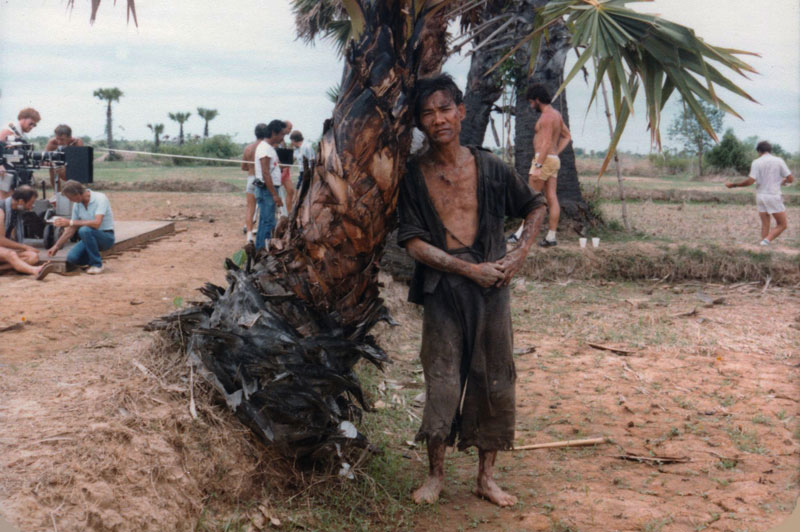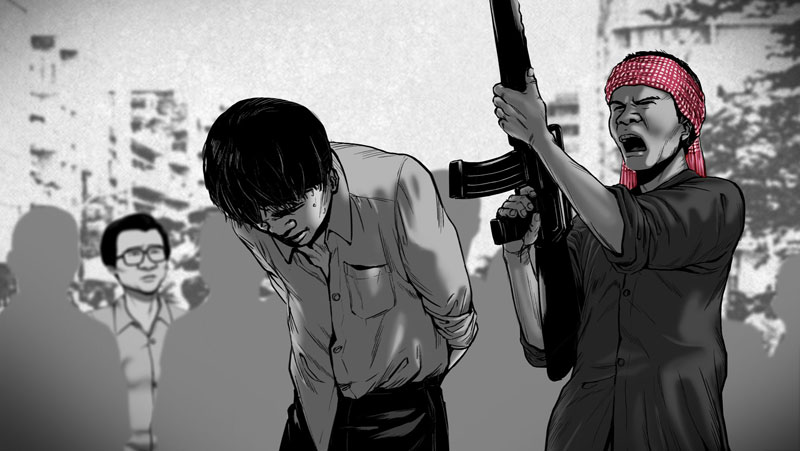On February 28, 1996, Haing Ngor, a Khmer Rouge survivor who found fame in his Oscar-winning role in “The Killing Fields,” was gunned down behind his house in Los Angeles. Two years later, three members of the “Oriental Lazy Boyz” gang were found guilty of killing the doctor-turned-actor during a botched robbery.
But flicking through the morning’s newspapers at his Los Angeles home in January 2010, filmmaker Arthur Dong came across an article about the Khmer Rouge tribunal in which former S-21 security center chief Kaing Guek Eav, better known as Duch, offered a different explanation for the doctor’s death.

“Haing Ngor was killed because he appeared in the film ‘The Killing Fields,’ and they wished to kill me and my wife in order to shut us up,” Duch told the court in November 2009.
Captivated by Duch’s claim, Mr. Dong delved into Haing Ngor’s autobiography “Survival in the Killing Fields,” which had been collecting dust on a shelf at his house. Hooked, he decided to make a documentary.
“I remember the murder of course, and what [Duch] said completely refuted the conviction and I’m not far from Long Beach, which is ‘Cambodia Town,’ and there had been rumblings in the community, but they had never spoken publicly about it and I was totally intrigued by the circumstances,” Mr. Dong said in an interview earlier this month.
The filmmaker initially planned to make a straightforward documentary about Haing Ngor’s life—his time as doctor in the 1960s, surviving the Pol Pot regime, finding fame in “The Killing Fields” and ensuing activism. But upon finishing “Survival in the Killing Fields,” he decided to also address the political factors that led to the Khmer Rouge’s rise to power.
“I think I’m typical of most Americans…in that what we mainly know about what happened during the war we learn about from ‘The Killing Fields.’ And that told a particular story and a particular point of view and it was a dramatized story,” Mr. Dong said.
“What it didn’t go into, which Dr. Ngor went into in his book, is all the complex global politics and maneuvering and the powers that play,” he said, including U.S. incursions into Cambodia during the Second Indochina War and then-Prince Norodom Sihanouk’s call for the peasantry to join the communist forces.

After receiving the go-ahead from Haing Ngor’s family, Mr. Dong boarded a flight to Phnom Penh and began trawling Bophana Center’s archives for footage of his subject. Sophia Ngor, who was raised by her uncle in the U.S. after they fled Cambodia and spent two years in a Thai refugee camp, also granted him access to a trove of VHS footage, journals and letters accumulated by her uncle, along with personal belongings including his glasses and sewing kit.
“After my uncle was murdered, we packed up the apartment and put everything in the storage, all of his stuff, and we shipped it to New York and…I labeled everything and hoped that one day there would be a documentary,” Ms. Ngor said from New York.
Mr. Dong finished “The Killing Fields of Haing S. Ngor” in April. The feature-length documentary entwines archival footage, animation and interviews the filmmaker conducted with family, friends and former colleagues.
The film is mostly narrated by Haing Ngor’s nephew Wayne Ngor, a New York City police officer.
“He’s not an actor, so it was a very interesting reading. I spent an afternoon with him in the recording studio in New York and I really wasn’t convinced until the very last minute that that was the direction I would go with,” Mr. Dong said.
“But emotionally, there is an impact there that can’t be replaced, the emotional connection that you know this voice belongs to Dr. Ngor’s nephew and no matter how eloquent or dramatic an actor can read the narration, you would never have that connection. After a while, Dr. Ngor and Wayne’s narration just kind of melds.”
Although Duch’s sensational statements about the murder catalyzed Mr. Dong’s desire to make the film, he did not end up unearthing any new evidence on the true story behind Haing Ngor’s death and contented himself with documenting the different claims.
The final part of the documentary features footage of Pol Pot’s former lieutenant Nuon Chea and Khmer Rouge head of state Khieu Samphan—the only regime leaders to have been convicted over the estimated 1.7 million deaths during the Khmer Rouge era—being sentenced to life in prison for crimes against humanity.
“I end it with a bigger question: Dr. Ngor’s summation of what is going on, and what is still going on, is that we are still struggling and we’re still trying to find blame, but we’re still struggling at the heart of it,” he said.
“The Killing Fields of Haing S. Ngor” has already been shown at the Los Angeles Asian Pacific Film Festival and at the Seattle International Film Festival, and Mr. Dong hopes to bring it to Cambodia this year for screenings in Phnom Penh, Battambang City and Siem Reap City, as well as in Haing’s Ngor’s home village in Takeo province.
“I didn’t want the murder to be what people remembered. I think the murder is part of his life—it’s the climactic moment of his life, you can’t ignore it—but I wanted to treat it as a point in his life,” Mr. Dong said.
“Murder doesn’t end his legacy; in some ways, it propels it and keeps it going.”



